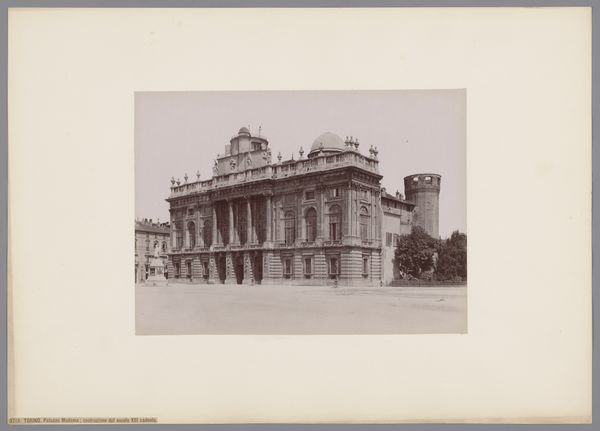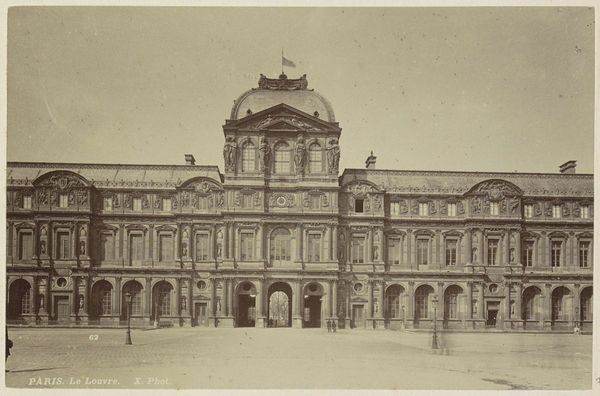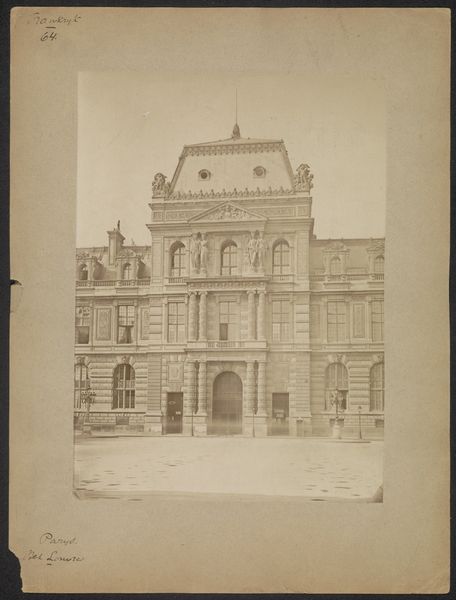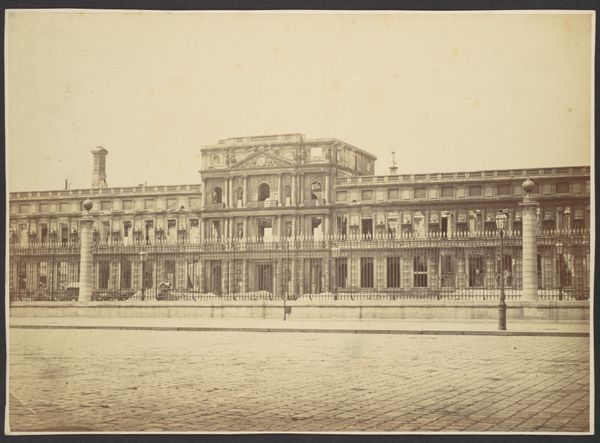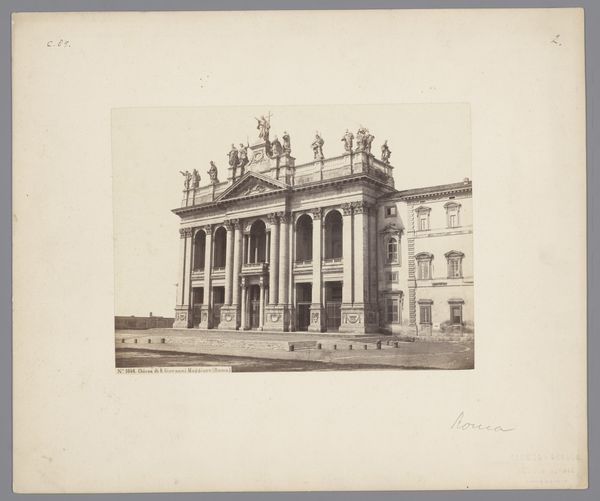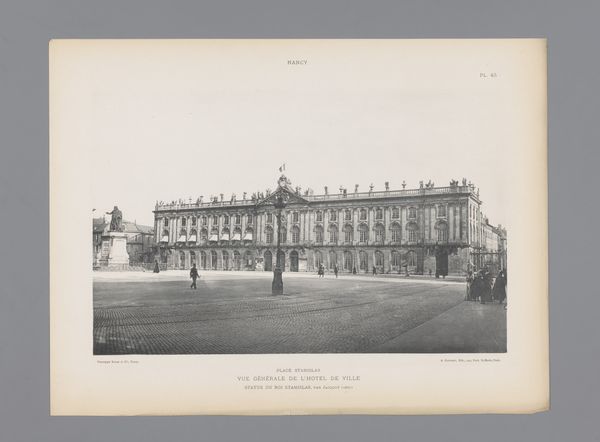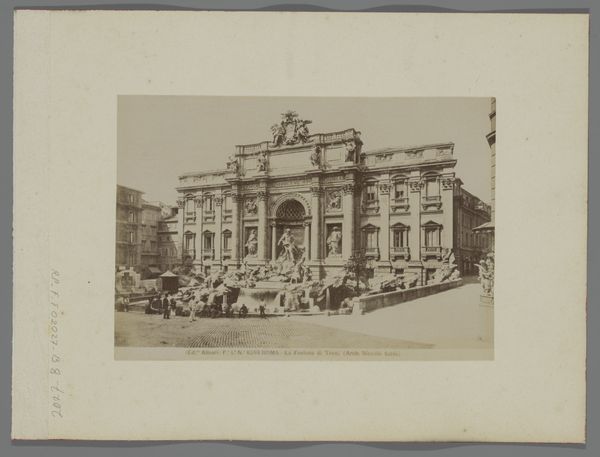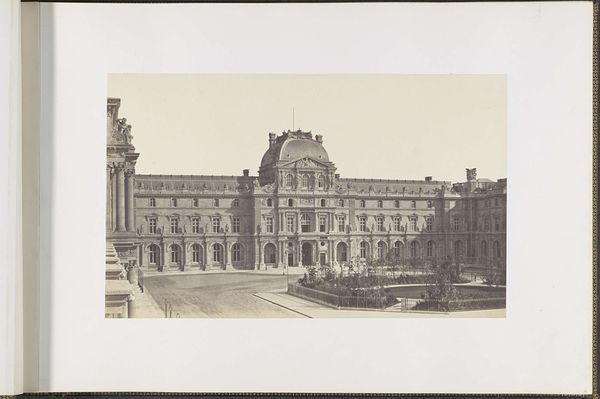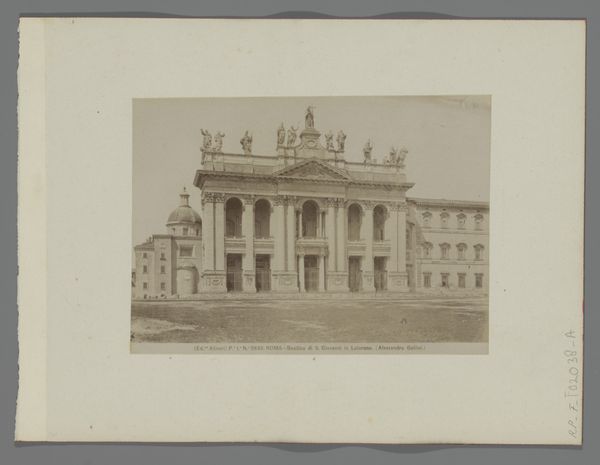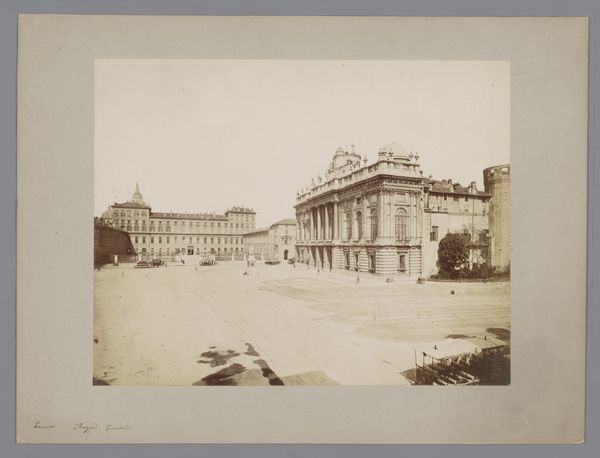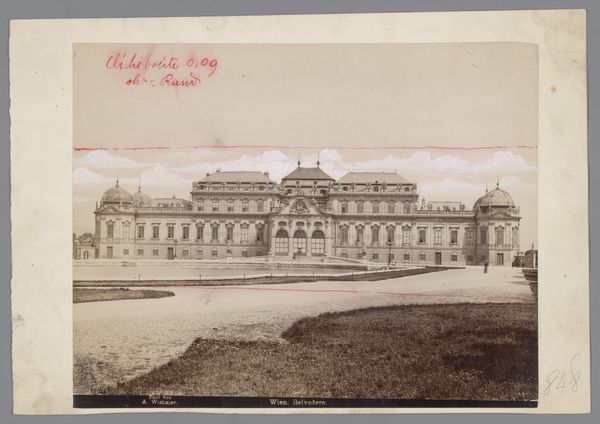
Westelijke gevel van het Musée du Louvre te Parijs, gezien vanaf de binnenplaats c. 1875 - 1900
0:00
0:00
photography
#
photography
#
cityscape
#
realism
#
building
Dimensions: height 208 mm, width 276 mm
Copyright: Rijks Museum: Open Domain
Curator: The weight of history, I think, looking at this photograph of the Louvre. There's a kind of melancholy to its muted tones. What do you think? Editor: Yes, there is. This photographic print captures the Western facade of the Musee du Louvre in Paris, taken from the courtyard. The photographer is listed as "X phot.," and the piece likely dates between 1875 and 1900. It's like seeing a ghost of Paris past. The rigid formality, the almost theatrical presentation of power through architecture... it's incredibly telling of the sociopolitical climate of the time. Curator: I agree. The symmetry is imposing, isn't it? It feels deliberately constructed to project permanence and authority. The arched doorways especially convey entry into sacred space, as if access itself were a privilege. Editor: Exactly. Think about who had access, and who didn't. Architecture is never neutral. The very stones whisper of power dynamics, gendered spaces, and class divisions. Consider Haussmann's renovations of Paris happening at the time. This isn't just about aesthetics; it's about control. Curator: I'm drawn to how light interacts with the facade. It gives a sense of depth to all the sculptural details and reliefs...it makes it breathe. There's almost a sense of implied movement, or rather a story being etched in the very stones over decades. It makes me want to understand that architectural 'language'. Editor: And it *is* a language! A language carefully cultivated to send very specific messages, often about who gets to write the narratives of history, or even the direction those narratives should follow. It's a photographic record, yes, but it’s also a powerful, constructed narrative in itself. Curator: Looking closely, you can almost imagine the sounds of the city, filtered through the stone… horse-drawn carriages perhaps. A faint trace of everyday life existing around this imposing symbol of state. Editor: And of revolution, remember, since that building has seen more than a little upheaval! Which makes it so interesting as a time capsule; both then, and now in this present moment as we view and attempt to understand it. Curator: Absolutely. The photograph prompts one to think about time, and memory. The fleeting nature of life juxtaposed against what endures... or, perhaps, only appears to endure. Editor: It also reminds me of the continuous dialogues we should have around cultural legacies, power, and whose stories get told. Let’s not just admire, but question, challenge, and re-contextualize the structures around us. Curator: Indeed, a dialogue is perhaps the greatest act of respect and inquiry.
Comments
No comments
Be the first to comment and join the conversation on the ultimate creative platform.

